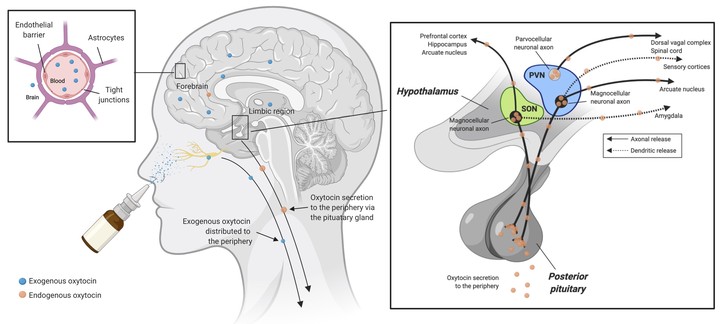Advances in the field of intranasal oxytocin research: lessons learned and future directions for clinical research

Abstract
Reports on the modulatory role of the neuropeptide oxytocin on social cognition and behavior have steadily increased over the last two decades, stimulating considerable interest in its psychiatric application. Basic and clinical research in humans primarily employs intranasal application protocols. This approach assumes that intranasal administration increases oxytocin levels in the central nervous system via a direct nose-to-brain route, which in turn acts upon centrally-located oxytocin receptors to exert its behavioral effects. However, debates have emerged on whether intranasally administered oxytocin enters the brain via the nose-to-brain route and whether this route leads to functionally relevant increases in central oxytocin levels. In this review we outline recent advances from human and animal research that provide converging evidence for functionally relevant effects of the intranasal oxytocin administration route, suggesting that direct nose-to-brain delivery underlies the behavioral effects of oxytocin on social cognition and behavior. Moreover, advances in previously debated methodological issues, such as pre-registration, reproducibility, statistical power, interpretation of non-significant results, dosage, and sex differences are discussed and integrated with suggestions for the next steps in translating intranasal oxytocin into psychiatric applications.